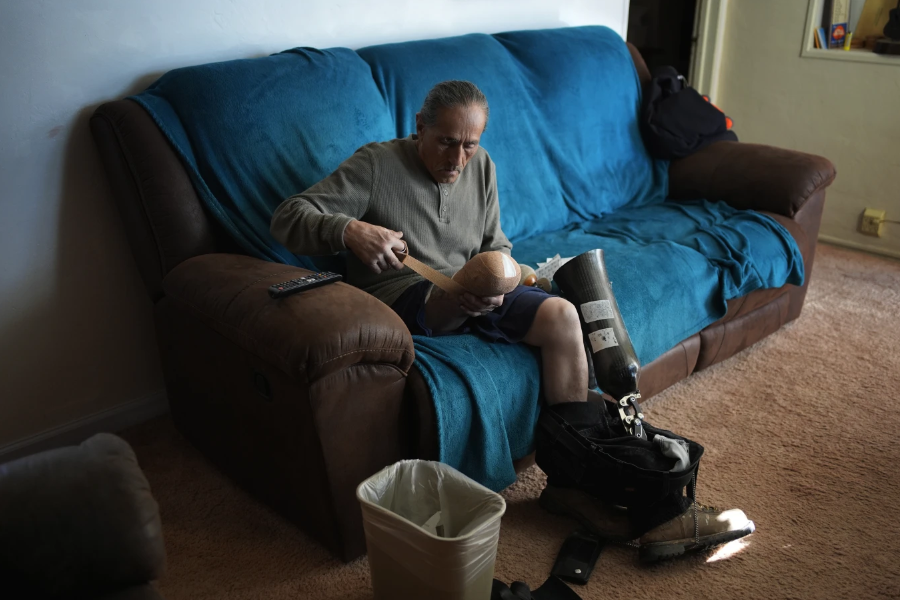
Blas Sanchez was nearing the end of a 20-year stretch in an Arizona prison when he was leased out to work at Hickman’s Family Farms, which sells eggs that have ended up in the supply chains of huge companies like McDonald’s, Target and Albertsons. While assigned to a machine that churns chicken droppings into compost, his right leg got pulled into a chute with a large spiraling augur.
“I could hear ‘crunch, crunch, crunch, crunch,’” Sanchez said. “I couldn’t feel anything, but I could hear the crunch.”
He recalled frantically clawing through mounds of manure to tie a tourniquet around his bleeding limb. He then waited for what felt like hours while rescuers struggled to free him so he could be airlifted to a hospital. His leg was amputated below the knee.
Nationwide, hundreds of thousands of prisoners are put to work every year, some of whom are seriously injured or killed after being given dangerous jobs with little or no training, The Associated Press found. They include prisoners fighting wildfires, operating heavy machinery or working on industrial-sized farms and meat-processing plants tied to the supply chains of leading brands. These men and women are part of a labor system that – often by design – largely denies them basic rights and protections guaranteed to other American workers.
The findings are part of a broader two-year AP investigation that linked some of the world’s largest and best-known companies – from Cargill and Walmart to Burger King – to prisoners who can be paid pennies an hour or nothing at all.
Prison labor began during slavery and exploded as incarceration rates soared, disproportionately affecting people of color. As laws have steadily changed to make it easier for private companies to tap into the swelling captive workforce, it has grown into a multibillion-dollar industry that operates with little oversight.
Laws in some states spell it out clearly: Prisoners aren’t classified as employees, whether they’re working inside correctional facilities or for outside businesses through prison contracts or work-release programs. That can exclude them from workers’ compensation benefits, along with state and federal laws that set minimum standards for health and safety on the job.
It’s almost impossible to know how many incarcerated workers are hurt or killed each year, partly because they often don’t report injuries, fearing retaliation or losing privileges like contact with their families. Privacy laws add to the challenges of obtaining specific data. In California, for instance, more than 700 work-related injuries were recorded between 2018 and 2022 in the state’s prison industries program, but the documents provided to the AP were heavily redacted.
At Hickman’s Family Farms, logs obtained by the AP from Arizona’s corrections department listed about 250 prison worker injuries during the same time frame. Most were minor, but some serious cases ranged from deep cuts and sliced-off fingertips to smashed hands.
“They end up being mangled in ways that will affect them for the rest of their lives,” said Joel Robbins, a lawyer who has represented several prisoners hired by Hickman’s. “If you’re going to come out with a good resume, you should come out with two hands and two legs and eyes to work.”
The AP requested comment from the companies it identified as having connections to prison labor. Most did not respond, but Cargill — the largest private company in the U.S. with $177 billion in revenue last year — said it was continuing to work “to ensure there is no prison labor in our extended supplier network.” Others said they were looking for ways to take action without disrupting crucial supply chains.
Prisoners across the country can be sentenced to hard labor, forced to work and punished if they refuse, including being sent to solitary confinement. They cannot protest against poor conditions, and it’s usually difficult for them to sue.
Most jobs are inside prisons, where inmates typically earn a few cents an hour doing things like laundry and mopping floors. The limited outside positions often pay minimum wage, but some states deduct up to 60% off the top.
